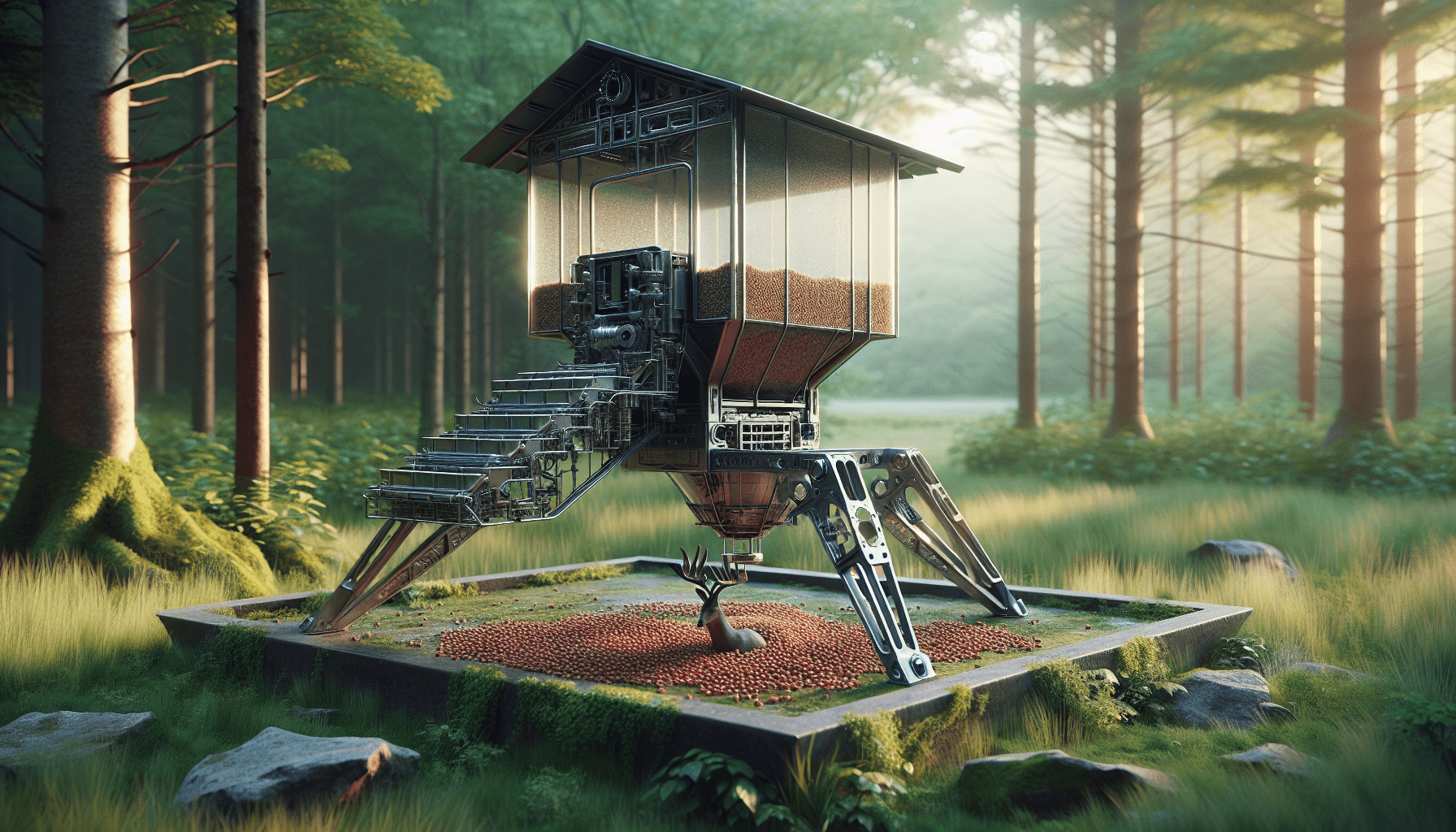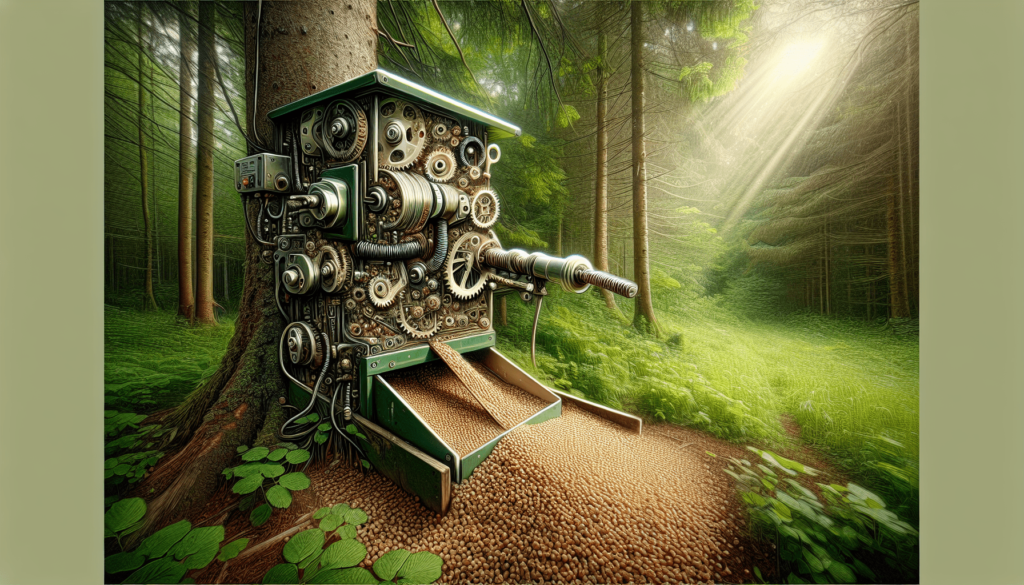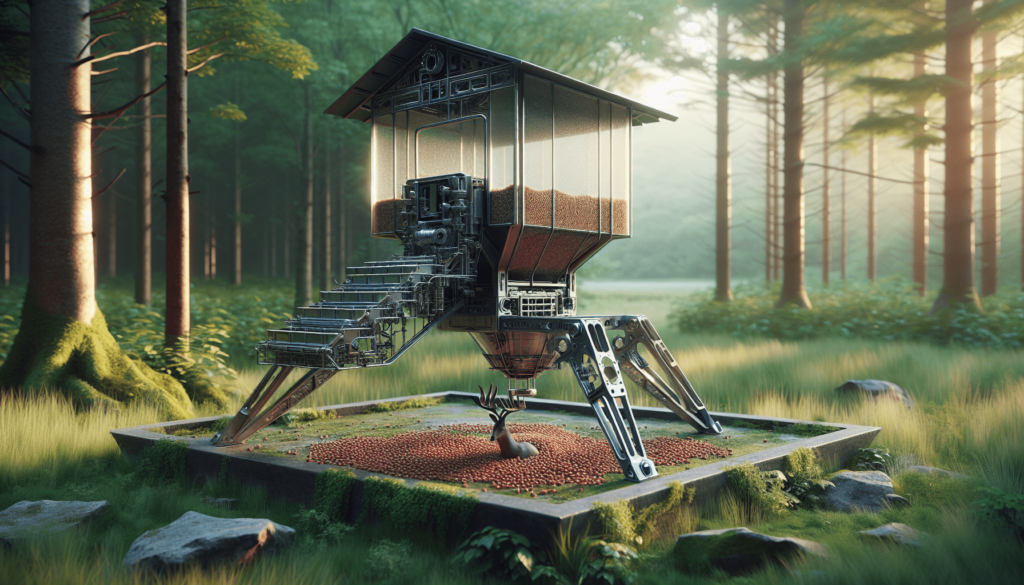
What do you do when your automatic deer feeder stops working just when the deer have come into season? It can be frustrating when you rely on technology to keep the wildlife fed and healthy. Let’s tackle some common issues you might encounter with automatic deer feeders and offer solutions to get you back on track with your outdoor feeding program.
Why Automatic Deer Feeders?
Automatic deer feeders are fantastic additions to your wildlife management toolkit. They help you distribute food efficiently, maintain a regular feeding schedule, and ultimately support healthier deer populations. However, like any equipment, they come with their set of challenges.

Types of Automatic Deer Feeders
Before we jump into troubleshooting, it’s important to understand that there are different types of automatic deer feeders. Each type may have its unique issues, so identifying your specific model—whether it’s a gravity feeder, spinner feeder, or a timer-controlled feeder—can make a difference in addressing problems.
Common Problems and Solutions
Now that you have a grasp on what type of feeder you’re dealing with, let’s look at the common problems that may arise and practical solutions you can try.
1. Feeder Not Dispensing Food
One of the most common problems is when your feeder simply won’t dispense food. There are several reasons why this might happen.
Possible Causes:
- Clogged Mechanism: Sometimes the food can clump and cause a blockage.
- Timer Issues: Your timer may not be set correctly or could be malfunctioning.
- Power Source: Check if the feeder is receiving power; batteries might need replacing.
Troubleshooting Tips:
- Check for Clogs: Look inside the feeder for any blockages or clumps and clear them.
- Reset the Timer: Ensure that your timer settings are correct. If it is a digital model, consider resetting it to factory settings.
- Inspect Power Source: If you’re using batteries, swap them out for fresh ones or ensure the solar panel is receiving adequate sunlight.
| Problem | Possible Cause | Solution |
|---|---|---|
| Feeder not dispensing | Clogged mechanism | Clear blockage |
| Timer issues | Reset the timer | |
| Power source issues | Replace batteries |
2. Feeders Running Out of Food Too Fast
Watching your feeder empty at an alarming rate can leave you scratching your head. Why is your feeder not lasting as long as it should?
Possible Causes:
- Incorrect Feed Type: Some types of feed are more appealing to deer, causing rapid consumption.
- Weather Elements: Rain could cause feed to clump or become less palatable, forcing deer to consume more quickly.
- Animal Interference: Other animals might be accessing the feeder, leading to faster depletion.
Troubleshooting Tips:
- Choose the Right Feed: Switch to a less desirable feed during peak activity times if you suspect deer are consuming too rapidly.
- Add Shields or Hoods: Protect the feed from moisture to maintain its quality.
- Limit Access: Use designs that block smaller animals from reaching the feeder without making it too difficult for deer.
| Problem | Possible Cause | Solution |
|---|---|---|
| Feeder running low quickly | Incorrect feed type | Switch to less enticing feed |
| Weather | Protect from rain | |
| Animal interference | Restrict access |
3. Feed Getting Wet or Molding
None of us would want to feed our deer old, moldy grain. If you notice the food in your feeder isn’t as fresh as it should be, it’s crucial to troubleshoot.
Possible Causes:
- Moisture Exposure: Rain and dew can easily infiltrate poorly designed feeders.
- Inadequate Drainage: Some feeders don’t have drainage holes, causing collected water to spoil the feed.
Troubleshooting Tips:
- Ensure Proper Shelter: Try to position your feeder under a tree or use a feeder that comes with an overhead cover.
- Choose a Feeder with Drainage: Opt for models that include drainage holes, so moisture can escape.
| Problem | Possible Cause | Solution |
|---|---|---|
| Feed getting wet/molding | Moisture exposure | Position feeder under cover |
| Inadequate drainage | Use a feeder with holes |
4. Digital Timer Malfunctions
Digital timers make managing feeding schedules much easier, but they can also present unique problems. If your timer isn’t working as intended, you have some troubleshooting steps ahead of you.
Possible Causes:
- Power Supply Interruptions: Power issues could cause the timer to reset and lose its programming.
- User Error: Sometimes, it’s just a matter of a simple reset or incorrect programming.
Troubleshooting Tips:
- Check Power Supply: Make sure batteries or solar panels are functioning as they should.
- Reset and Reconfigure: Try resetting the timer and carefully reprogramming the feeding schedule.
| Problem | Possible Cause | Solution |
|---|---|---|
| Timer malfunctions | Power supply issues | Check batteries/solar panel |
| User error | Reset and reconfigure |
5. Feeder Malfunctioning During Cold Weather
Cold weather brings about unique challenges for your automatic deer feeders. If it’s wintertime and your feeder isn’t working right, there are several factors to consider.
Possible Causes:
- Battery Performance: Batteries drain faster in colder conditions.
- Food Consistency: In extreme cold, certain food types can freeze, making it hard to dispense.
Troubleshooting Tips:
- Switch to Cold-Weather Batteries: Consider using lithium batteries designed to last in colder temperatures.
- Check Food Types: Opt for feed that remains loose and able to flow even in colder conditions.
| Problem | Possible Cause | Solution |
|---|---|---|
| Feeder malfunctioning in winter | Battery performance | Use cold-weather batteries |
| Food consistency | Change to colder-resistant feed |
6. Wildlife Trespassers
You may find that other wildlife, especially raccoons or squirrels, are also interested in your deer feeder. If they’re raiding your feeder, you’ll want to take measures to deter them.
Possible Causes:
- Accessible Design: Some feeders are easily climbed upon or accessed by smaller animals.
- Luring Food Selection: If the feed is particularly enticing, it will attract all sorts of furry friends.
Troubleshooting Tips:
- Select an Animal-Proof Feeder: Look for designs with features that prevent smaller animals from getting inside.
- Choose Feed Wisely: Use less appealing food for unwanted visitors while still attracting deer.
| Problem | Possible Cause | Solution |
|---|---|---|
| Unwanted animals | Accessible feeder design | Use an animal-proof feeder |
| Enticing food | Switch to less appealing feed |
7. Noisy Feeders
Automated feeders can sometimes be noisy when they operate, causing disturbances that might scare away deer instead of attracting them.
Possible Causes:
- Loose Parts: Over time, components of your feeder can become loose and create noise.
- Mechanical Issues: Older feeders may have worn-out parts, leading to erratic sounds.
Troubleshooting Tips:
- Tighten All Components: Regularly inspect and secure any loose screws or parts.
- Lubricate Moving Parts: If mechanics are the issue, a bit of lube can help reduce noise.
| Problem | Possible Cause | Solution |
|---|---|---|
| Noisy feeder | Loose parts | Tighten components |
| Mechanical issues | Lubricate moving parts |
Maintenance Tips for Preemptive Care
Preventing issues is often much easier than fixing them once they arise. Here are some maintenance tips to keep your automatic deer feeder in tip-top shape.
Regular Inspections
Make it a habit to check your feeder regularly for signs of wear and tear. This includes inspecting the feed, mechanism, and any electrical components.
Cleanliness Matters
Keep your feeder clean by removing old feed and debris regularly. This can prevent mold growth and keep your deer coming back for more.
Seasonal Checks
As seasons change, your feeders might need adjustments. Check their functioning in both wet and cold weather conditions, ensuring they’re ready for any challenges.
When to Call for Help
While many issues can be solved through simple troubleshooting methods, sometimes a problem can be too complicated or require specialized knowledge. If you find that repeated attempts to fix the problem fail, it could be time to consult a professional.

Conclusion
Navigating issues with your automatic deer feeder can sometimes feel overwhelming, but understanding potential problems and preventive measures can turn what could be a frustrating situation into a manageable one. With the right approach, you can continue to successfully feed and attract deer, ensuring a healthy wildlife population for seasons to come.
Take care of your feeder as you would any valuable piece of equipment—maintaining it will not only prolong its life but also enhance your overall deer feeding experience. Remember, maintaining the balance of nature is a rewarding venture filled with patience, care, and sometimes a bit of trial and error. Your quest for effective wildlife management doesn’t have to feel like a struggle; instead, it can be a fulfilling part of your outdoor journey.





